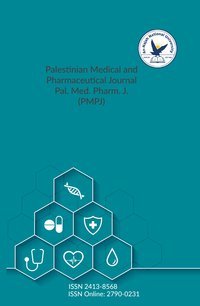The molecular basis of the severe acute respiratory syndrome coronavirus 2 (sars-cov-2)
Authors:
Article info
2021-11-26
2022-04-03
217 - 236
Keywords
- ACE2
- TMPRSS2
- SARS-CoV-2
- vaccine
Abstract
The severe acute respiratory syndrome coronavirus 2 (SARS-CoV-2) is a positive single-stranded ribonucleic acid (ssRNA) virus in the Coronavridae family that was first identified in December 2019. The virus causes a disease named COVID-19, which is associated with various respiratory symptoms ranging from mild to life-threatening complications. The pan-demic state was announced by the World Health Organization (WHO) in March 2020. Since then, the viral genome and structure have been extensively studied. This review aims to pre-sent the most recent advances in the SARS-CoV-2. The viral genome encodes 16 non-structural proteins involved in viral replication and transcription, four structural proteins as-sembled to form the virions, and at least six accessory proteins involved in viral pathogenici-ty and virions assembly. Being an RNA virus, the SARS-CoV-2 genome undergoes rapid mu-tations. Several thousand mutations in the submitted genomes compared with the first strain have been reported since the pandemic's beginning. Some mutations such as the ''Cluster 5'' variant, VOC 202012/01, and the N501Y mutation raised public health concerns globally be-cause they could affect the virus transmissibility, disease severity, diagnostic methods, and vaccine development. The virus infects humans by recognizing the ACE2 receptor on the human cells and the TMPRSS2 proteolytic effect. The gold standard diagnostic method based on the WHO is nucleic acid amplification testing; however, several other non-molecular and radiological testing could also be beneficial. Several trials have been initiated to produce an effective vaccine, more than 60 have reached clinical trials, and some have recently been approved. The leading vaccines are the RNA-based ones; BNT162b2 and Moderna. Further studies are required to evaluate the vaccines' effectiveness, diagnostic efficacy, and disease management to keep pace with the ongoing viral evolution.
The molecular basis of the severe acute respiratory syndrome coronavirus 2 (sars-cov-2)
المؤلفون:
معلومات المقال
2021-11-26
2022-04-03
217 - 236
الكلمات الإفتتاحية
- ACE2
- TMPRSS2
- SARS-CoV-2
- vaccine
الملخص
The severe acute respiratory syndrome coronavirus 2 (SARS-CoV-2) is a positive single-stranded ribonucleic acid (ssRNA) virus in the Coronavridae family that was first identified in December 2019. The virus causes a disease named COVID-19, which is associated with various respiratory symptoms ranging from mild to life-threatening complications. The pan-demic state was announced by the World Health Organization (WHO) in March 2020. Since then, the viral genome and structure have been extensively studied. This review aims to pre-sent the most recent advances in the SARS-CoV-2. The viral genome encodes 16 non-structural proteins involved in viral replication and transcription, four structural proteins as-sembled to form the virions, and at least six accessory proteins involved in viral pathogenici-ty and virions assembly. Being an RNA virus, the SARS-CoV-2 genome undergoes rapid mu-tations. Several thousand mutations in the submitted genomes compared with the first strain have been reported since the pandemic's beginning. Some mutations such as the ''Cluster 5'' variant, VOC 202012/01, and the N501Y mutation raised public health concerns globally be-cause they could affect the virus transmissibility, disease severity, diagnostic methods, and vaccine development. The virus infects humans by recognizing the ACE2 receptor on the human cells and the TMPRSS2 proteolytic effect. The gold standard diagnostic method based on the WHO is nucleic acid amplification testing; however, several other non-molecular and radiological testing could also be beneficial. Several trials have been initiated to produce an effective vaccine, more than 60 have reached clinical trials, and some have recently been approved. The leading vaccines are the RNA-based ones; BNT162b2 and Moderna. Further studies are required to evaluate the vaccines' effectiveness, diagnostic efficacy, and disease management to keep pace with the ongoing viral evolution.
An-Najah National University
Nablus, Palestine
Nablus, Palestine
- P.O. Box
- 7, 707
- Fax
- (970)(9)2345982
- Tel.
- (970)(9)2345560
- (970)(9)2345113/5/6/7-Ext. 2628
- [email protected]
- EIC
- Prof. Waleed Sweileh
